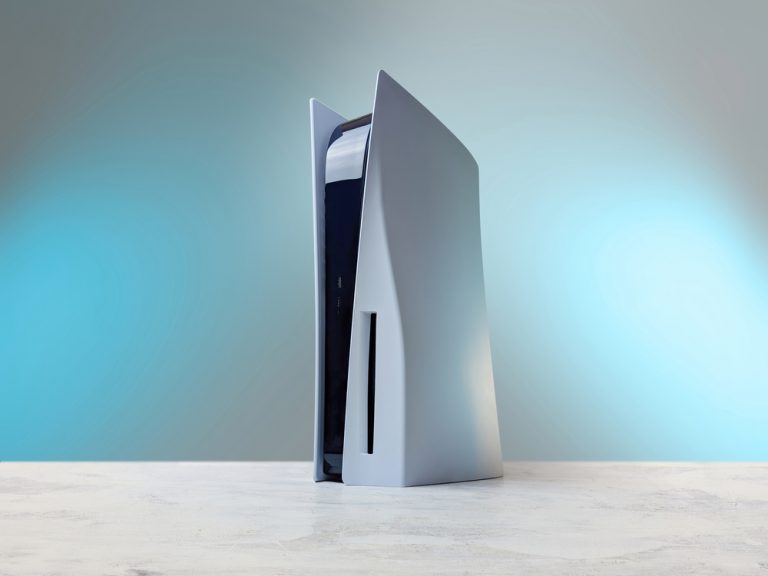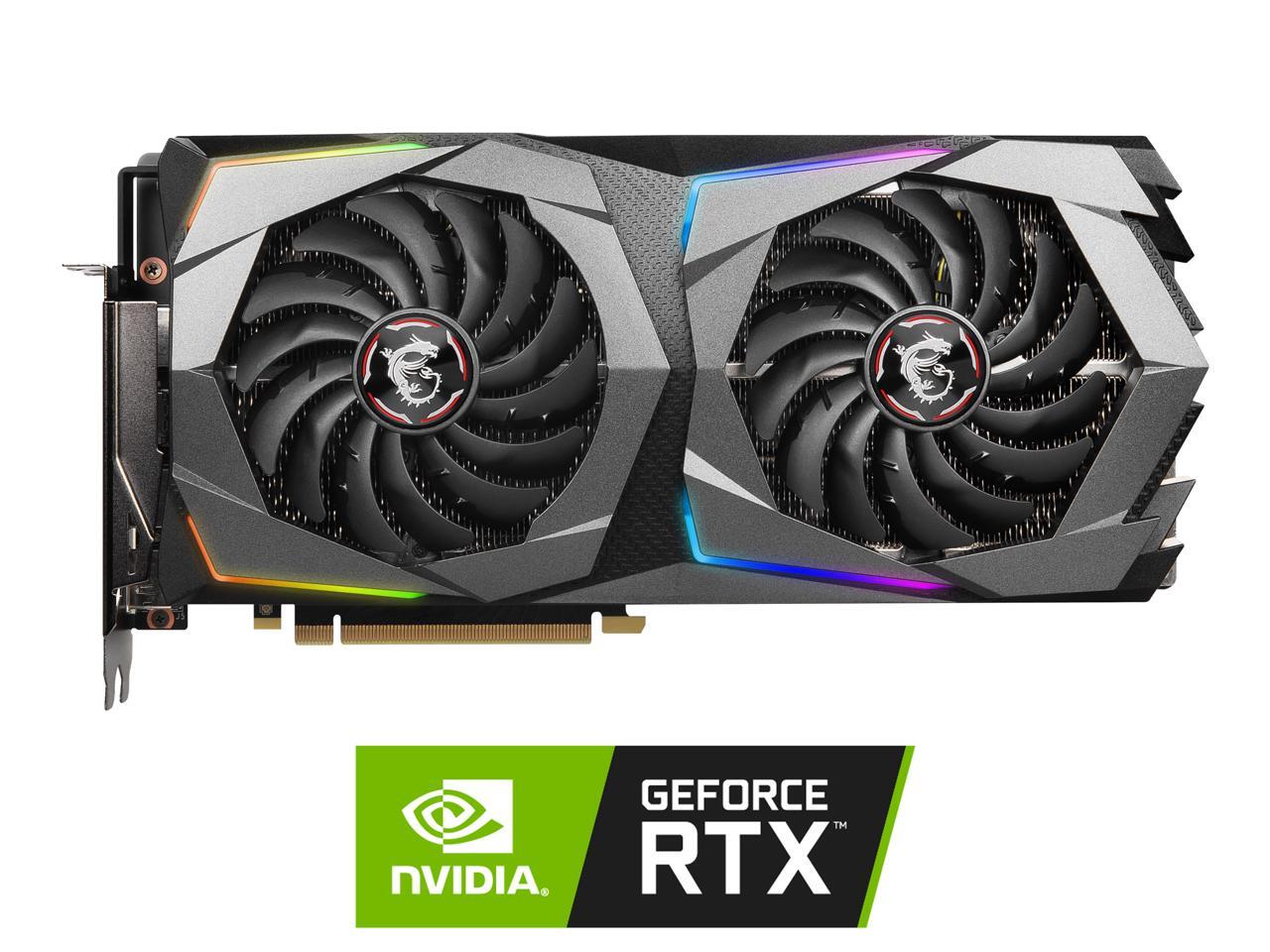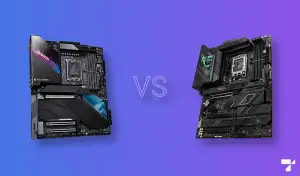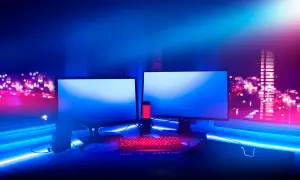The graphical performance of Consoles had been compared to PCs in a negative light for quite some time. But with the release of current-gen consoles such as the PlayStation 5, that sentiment has changed drastically over the past couple of years. The main reason why is due to the native 1080p and 4K, with either 60 or 120 FPS the PS5’s graphical performance delivers. A large portion of the PS5 improved graphical performance is due to its GPU. However, the question of what is the PS5 GPU Equivalent to a PC? then arises.
Judging by the PS5’s performance in triple-A games since its release, the PS5 graphics card equivalent is either the AMD Radeon RX 5700 XT or an Nvidia Geforce RTX 2070 Super. Any other GPUs that fall within the same performance range are also included as well, such as the RX 6600 XT or the RTX 3060. This is more than just an assessment of FPS, though. Because piece by piece, the PS5 GPU isn’t remotely comparable in a direct sense, even when it has since then adopted an X86 system since the last generation.
What is the PS5 GPU?
The PS5 GPU is an RDNA 2.0-based custom chip built on TSMC’s 7nm process node, previously codenamed “Oberon” during the console’s development. Like the PS4 before it, it was given a bit of a headstart when it comes to physical specs, to allow standardization of the latest graphics technologies while slowing down its eventual obsolescence (until the next generation is released).
The main die is 308 mm2 in size, and consists of 2,304 graphics cores (shading units), as well as 36, compute units (CU). The physical configuration of the chip is similar to a Radeon RX 5600 XT, which also has the exact same number of shading units and CU, but on a different die size (251 mm2).
That being said, it can effectively go beyond the RX 5600 XT and is generally considered to be somewhat on par with the RX 5700 XT’s relative performance when it comes to the PS5 GPU equivalent. It is, after all, one generation above (RDNA 2.0 versus RDNA 1.0), and has improved processor clock speeds combined with boosted memory specs akin to an upper mid-range to a high-end RDNA 2.0 GPU.
PS5 GPU Specs
| GPU (code)name | Oberon |
| Architecture | (AMD) RDNA 2.0 |
| Process node | 7nm (TSMC) |
| Graphics cores | 2304, 36CU |
| Clock speed (max) | 2,233 Mhz |
| Memory | 16GB GDDR6 |
| Memory clock | 1,750 Mhz |
| Bus width | 256 bit |
| Bandwidth | 448 GB/s |
| TDP | 180 W |
| Texture rate | 321.6 GTexel/s |
| FP32 perf | 10.29 TFLOPS |
Design architecture
RDNA 2.0’s primary improvements over RDNA 1.0 were mainly focused on efficiency. Although it wasn’t near the 50% performance-per-watt improvement as AMD previously claimed, it was enough that it became a primary candidate for the then-upcoming PS5’s main system. There are proprietary tweaks and modifications, of course, but the following innovations still apply:
- Mesh Shader support
- Samper Feedback support
- Hardware-accelerated ray tracing
- Overall improved heat dissipation and reduced power draw
- Radeon Super Resolution support (future update)
Physical configuration
As mentioned earlier, the main chip consists of 2,304 shader units, complemented by 144 texture mapping units, 64 render output units, and 36 compute units, and is configured to boost at a maximum clock speed of 2,233 Mhz. Compared to other SKUs of the RDNA 2.0 discrete GPU lineup, its processor clock frequency is relatively low in value (the RX 6600, for example, boosts to 2,490 Mhz without factory-level overclocks).
Memory specification
Despite its upper entry-level-ish clock speed and similar physical configuration to the RDNA 1.0 Radeon RX 5600 XT, it can still perform like a similar-generation mid-range GPU using its hefty memory hardware. It has a wide 256-bit memory bus (same as the RX 5700 XT), with a whopping 16GB of GDDR6 VRAM. To put that into perspective, only the high-end RDNA 2.0 cards such as the RX 6800, RX 6800 XT, and RX 6900 XT are given this memory configuration. Like the GTX 1660 Super, this memory boost alone allows it to overcome the “limitations” of its graphics cores, and perform more like an upper mid-range PC.
Theoretical performance
While not directly comparable, the PS5 GPU’s texture rate of 321.6 GTexel/s and FP32 performance of 10.29 TFLOPS is yet another proof that it can compete fairly well with mid-range GPUs during the time of its release. In fact, in purely numerical terms, it’s somewhat higher. Compared to the PS5 GPU equivalent, the RX 5700 XT is rated at 304.8 GTexel/s and 9.754 (FP32) TFLOPS, while the RTX 2070 Super hangs at around 283.2 GTexel/s and (FP32) 9.062 TFLOPS.
Practical performance
When it comes to actual games, the PS5 delivers true 1080p performance from 60 to 120 FPS, depending on the title. Quality modes that lower the FPS to 30 while maxing out visual settings are also possible, especially when playing at (also native) 4K resolution. Dynamic resolution scaling can be applied to certain games, such as Call of Duty: Warzone, to keep the framerate stable even when playing at graphically taxing settings. Moreover, well-designed and highly-optimized triple-A games, for example, Doom Eternal, can even be cranked all the way up to 4K and 120 FPS, delivering a near indistinguishable performance to that of a modern-day mid-range PC.
Do note, however, that to play at 4K 120 FPS, you need to have a monitor that supports HDMI 2.1, as well as a cable that can support the necessary data bandwidth. Also, 1440p is not natively supported by the PS5 (at the moment). When played on a 1440p monitor, the console will simply default back to 1080p, and stretch the image on the whole screen.
Heat dissipation requirements
With a TDP of 180 watts, the PS5 GPU lives true to the RDNA 2.0’s reputation for power efficiency. This also makes it much closer to the generational successor of the RX 5700 XT, the RX 6600 XT, which also has a nearly similar heat dissipation rating of 160 watts.
PS5 GPU equivalent
In terms of performance stability, the nearest PS5 GPU equivalent is the AMD Radeon RX 5700 XT and Nvidia Geforce RTX 2070 Super. Both have the closest theoretical performance margins and memory bandwidth, and also nearly provide a similar FPS experience when equated with PS5 native graphical settings (of a particular game). For the RX 5700 XT, the comparison is even more similar due to being a generational predecessor.
Within the same RDNA 2.0 architecture, the nearest PS5 equivalent GPU would be an RX 6600 XT. This comparison only directly applies in 1080p, however, as the RX 6600 XT doesn’t have nearly the same memory bandwidth to maintain its performance stability in 4K. For a more recent architecture Nvidia counterpart, the Geforce RTX 3060 is also fairly comparable as well.
PS5 GPU Compared to PC GPUs
For a more quantitative comparison, here is a chart that compares the PS5 GPU to other equivalent PC GPUs:
Specifications and theoretical performance:
| PS5 GPU | RX 5700 XT | RX 6600 XT | RTX 2070 Super | |
|---|---|---|---|---|
| Architecture | RDNA 2.0 | RDNA 1.0 | RDNA 2.0 | Turing |
| GPU Cores | 2304, 36 CU | 2560, 40 CU | 2048, 32 CU | 2560, 40 SM |
| Boost Clock | 2,233 Mhz | 1,905 Mhz | 2,589 Mhz | 1,770 Mhz |
| Memory | 16GB GDDR6 | 8GB GDDR6 | 8GB GDDR6 | 8GB GDDR6 |
| Memory Clock | 1,750 Mhz | 1,750 Mhz | 2,000 Mhz | 1,750 Mhz |
| Bus width | 256-bit | 256-bit | 128-bit | 256-bit |
| Texture rate | 321.6 GTexel/s | 304.8 GTexel/s | 331.4 GTexel/s | 283.2 GTexel/s |
| FP32 perf | 10.29 TFLOPS | 9.754 TFLOPS | 10.60 TFLOPS | 9.062 TFLOPS |
| TDP | 180 W | 225 W | 160 W | 215 W |
(Listed RTX 2070 Super is for reference only)
Take note that while the RX 6600 XT has a higher theoretical performance rate, its performance value becomes significantly hampered at 4K due to its limited 128-bit memory bus width.
Actual real-world performance, at 4K (PC versions on Ultra settings):
| PS5 GPU | RX 5700 XT | RX 6600 XT | RTX 2070 Super | |
|---|---|---|---|---|
| The Witcher 3 | 30 FPS | 49 FPS | 41 FPS | 55 FPS |
| Assassin’s Creed Valhalla | 60 FPS | 33 FPS | 29 FPS | 36 FPS |
| Metro Exodus (Enhanced) | 60 FPS | 37 FPS | 34 FPS | 48 FPS |
| Battlefield 1 | 60 FPS | 74 FPS | 50 FPS | 73 FPS |
| Far Cry 5 | 30 FPS | 53 FPS | 50 FPS | 54 FPS |
| Shadow of the Tomb Raider | 60 FPS | 40 FPS | 38 FPS | 44 FPS |
(Benchmark Sources: Eurogamer, Tom’s Hardware)
While most of the superior numbers can be attributed to the PS5 not exactly using the same Ultra settings, the results also partially reflect better software optimization, as well as the use of feature tweaks (like setting-based or dynamic resolution scaling) that might still have to be toggled on/off (DLSS/FSR), or straight up not available on the PC.
CPU performance should not be an issue for this benchmark data, by the way, as it is taken in 4K (almost exclusively GPU-bound).
How Software Impacts GPU Performance
As hinted by the previous benchmarks, there is a distinct performance bias towards the PS5 when compared to its GPU equivalent simply due to how well-optimized the games are designed for the console. It is, after all, one of the first two platforms that developers create games for traditionally. So even if porting titles is easier with cross-platform X86 compatibility since the PS4, there will always be certain tweaks available only on the PS5’s unique architecture that would enhance performance levels to relative playability.
Shadow of the Tomb Raider is perhaps the best game to give as an example. It was already a very impressive game with its balanced PC performance that allows it to remain a benchmark title. But it shines even more in next-generation consoles, particularly with the PS5 due to excellent framerate stability.
And yes, this software optimization perk even includes the infamous initial release of Cyberpunk 2077 in December 2020.
Recommended Graphics Cards (Building a PC via a PS5 Equivalent GPU)
AMD Radeon RX 5700 XT – If you are looking for a graphics card that will deliver a similar performance to the PS5, then the AMD Radeon RX 5700 XT is the nearest PS5 GPU equivalent. To emulate the higher refresh rates provided by the PS5 at 4K using dynamic resolution scaling techniques, it is recommended to make use of either FSR or RSR. The target motherboard’s primary PCIe slots should be at least PCIe 3.0.
Nvidia Geforce RTX 2070 Super – Another good PS5 GPU equivalent choice if you plan to play with a mix of 1080p and 4K resolutions. While specs are completely incomparable due to having different architectures, theoretical performance does check out with the PS5 GPU’s number-crunching capabilities. Use DLSS to emulate PS5 dynamic resolution scaling whenever possible. The target motherboard’s primary PCIe slot, again, should at least be PCIe 3.0.
AMD Radeon RX 6600 XT – If you are mainly playing in 1080p 60 to 120 FPS, then the newer (and equal in architecture to the PS5) RX 6600 XT is a stable PS5 GPU equivalent choice. No super-resolution scaling features are required. Just play the equivalent game in either Ultra or High settings, and you’re ready to go. The target motherboard’s primary PCIe slot should be at least PCIe 4.0 to keep those last few frames in check.
Nvidia Geforce RTX 3060 – If you want mostly 1080p PS5 GPU equivalent performance, but still would like to avail more advanced technologies that would allow limited 4K gaming. DLSS is not exactly universal across games. But if the option is available, it can greatly help offset its memory bandwidth limitations in 4K. Because its PCIe pins are configured to x16, it can also be safely plugged into a PCIe 3.0 system without significant performance bottlenecks.
BONUS: Nvidia GTX 1080 Ti – for those still rocking the legendary GTX 1080 Ti, congratulations! You already have a PS5-equivalent GPU! Simply pair it with the correct equivalent PS5 CPU, and you’re done. Hopefully, the graphically-intensive games you’re planning to play in 4K support FSR, so it can also somewhat emulate the PS5’s dynamic resolution scaling features.
Final Thoughts
Sony was given a rather tall order when first designing the Playstation 5. The pressure was mounting on the rapid development of PC technology after 2017 with the release of Ryzen CPUs, RDNA 1.0 GPUs, and the reveal of Nvidia’s very first RTX lineup. But for the most, the company has thankfully delivered quite well. No longer do the memes of console 30 FPS gameplay apply. The PS5 GPU performance has become almost indistinguishable from contemporary PC GPUs if no benchmarks are shown and the hardware isn’t revealed.
Also, with advanced design “precautions”, such as the use of an 8-core/16-thread CPU, and the hefty provision of 16GB VRAM, it is expected that the console will age even more gracefully than its predecessor, at least for the entire lifespan of its relevance with the ever rapidly evolving consumer tech. But with that being said, the PS5 GPU equivalent is either the AMD Radeon RX 5700 XT or an Nvidia Geforce RTX 2070 Super.
FAQ About the PS5 GPU
1. Is PS5 better than RTX 3070?
No, the PS5 GPU is not better than the RTX 3070. Being that the closest RTX equivalent is an RTX 3060, a card that is a tier below, it is expected that the RTX 3070 would edge it out in raw performance.
2. Is RTX 2080 better than PS5?
Yes, the RTX 2080 is also better than the PS5. Again, we base this conclusion on the fact that the RTX 2070 Super is the nearest direct equivalent, which is a tier below the GPU mentioned for this question.
3. Is PS5 better than RTX 2060?
Yes, the PS5 is better than the RTX 2060 this time. Not only is it below the equivalent tier line, but the theoretical number-crunching performance (FP32 TFLOPS) is also pretty low to compare.
4. Is PS5 Better than the RTX 3060?
Yes and no, but it depends on the game being played. The RTX 3060 is within the same tier, and therefore the performance should theoretically be the same. In practice, however, this “equality” usually means that the PS5 might feel more stable to play on certain games, while the RTX 3060 could trump others. It’s a matter of optimization at this point.





